UTAGAWA TOYOKUNI (1769-1825)* Beauty with a hand-mirror Hanging scroll, ink and color on silk, 93 x 34 cm. (36 5/8 x 13 3/8 ins.), signed Toyokuni ga , sealed Ichiyosai Utagawa Toyokuni is best known as the leading theatre print designer and book illustrator of the late 18th and early 19th century. The son of a puppet-maker, he entered the school of a neighbor, the ukiyo-e painter and landscapist Utagawa Toyoharu (1735-1814), from whom he received his family name Utagawa and derived the first two syllables of his personal, or working, name. At first Toyokuni imitated the work of the popular beauty artists of the day, Hosoda Eishi (1756-1829) and Kitagawa Utamaro (1754-1856), but by the mid-1790s, his own brand of sharp and incisive portraiture emerged. This new style is best exemplified by his series of prints for the publisher Izumiya Ichibei entitled Yakusha butai no sugata-e (A Pictorial Almanac of Actors on the Stage), in which he combined realistic portraits of his subjects with the exaggeratedly elongated figure-style concurrently in vogue in beauty prints of this date. This series, a group of okubi-e actor portraits and several sets of beauty prints published at the same time, are regarded as the high-point of Toyokuni's career. The tall, willowy figure of the girl in "Beauty with a hand-mirror", the drawing of the facial features and the signature style show that it is to this period that this painting belongs. Toyokuni was especially talented as a teacher and instructed numerous pupils. Under his guidance the Utagawa School rose to dominate the publication of theatre prints in the early 19th century. Two of his students, Utagawa Kunisada (1786-1865) and Utagawa Kuniyoshi (1797-1861), together with the landscapist Utagawa Hiroshige (1797-1858) (a pupil of his colleague Utagawa Toyohiro (1773-1828)), became the leading ukiyo-e printmakers of the late Edo period. The poem is signed Hyoshu and reads: Taoyama no kewai utsuseru asa-kagami hakanaki yo oba kage to shirazuya The mirror in the morning reflects a graceful maiden applying her powder-- but can it capture the image of a transient world? The poem presents a bitter-sweet observation that the maiden is alluring as she fixes her make-up in the morning, but at the same time she is in no doubt that her beauty--like the floating world about her--is as insubstantial as the reflected image ( kage ) in the mirror. The character on the mirror case reads kame (tortoise), an auspicious character meaning long life.
UTAGAWA TOYOKUNI (1769-1825)* Beauty with a hand-mirror Hanging scroll, ink and color on silk, 93 x 34 cm. (36 5/8 x 13 3/8 ins.), signed Toyokuni ga , sealed Ichiyosai Utagawa Toyokuni is best known as the leading theatre print designer and book illustrator of the late 18th and early 19th century. The son of a puppet-maker, he entered the school of a neighbor, the ukiyo-e painter and landscapist Utagawa Toyoharu (1735-1814), from whom he received his family name Utagawa and derived the first two syllables of his personal, or working, name. At first Toyokuni imitated the work of the popular beauty artists of the day, Hosoda Eishi (1756-1829) and Kitagawa Utamaro (1754-1856), but by the mid-1790s, his own brand of sharp and incisive portraiture emerged. This new style is best exemplified by his series of prints for the publisher Izumiya Ichibei entitled Yakusha butai no sugata-e (A Pictorial Almanac of Actors on the Stage), in which he combined realistic portraits of his subjects with the exaggeratedly elongated figure-style concurrently in vogue in beauty prints of this date. This series, a group of okubi-e actor portraits and several sets of beauty prints published at the same time, are regarded as the high-point of Toyokuni's career. The tall, willowy figure of the girl in "Beauty with a hand-mirror", the drawing of the facial features and the signature style show that it is to this period that this painting belongs. Toyokuni was especially talented as a teacher and instructed numerous pupils. Under his guidance the Utagawa School rose to dominate the publication of theatre prints in the early 19th century. Two of his students, Utagawa Kunisada (1786-1865) and Utagawa Kuniyoshi (1797-1861), together with the landscapist Utagawa Hiroshige (1797-1858) (a pupil of his colleague Utagawa Toyohiro (1773-1828)), became the leading ukiyo-e printmakers of the late Edo period. The poem is signed Hyoshu and reads: Taoyama no kewai utsuseru asa-kagami hakanaki yo oba kage to shirazuya The mirror in the morning reflects a graceful maiden applying her powder-- but can it capture the image of a transient world? The poem presents a bitter-sweet observation that the maiden is alluring as she fixes her make-up in the morning, but at the same time she is in no doubt that her beauty--like the floating world about her--is as insubstantial as the reflected image ( kage ) in the mirror. The character on the mirror case reads kame (tortoise), an auspicious character meaning long life.
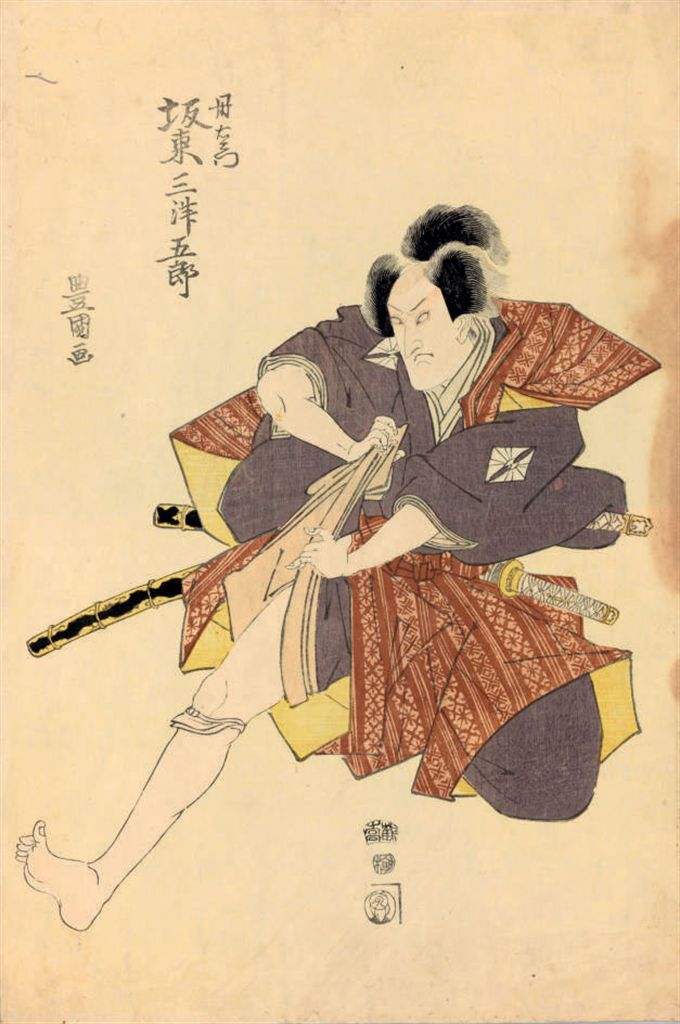
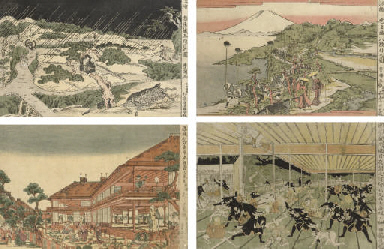
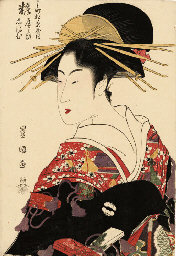
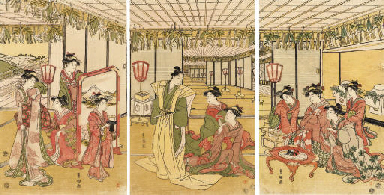
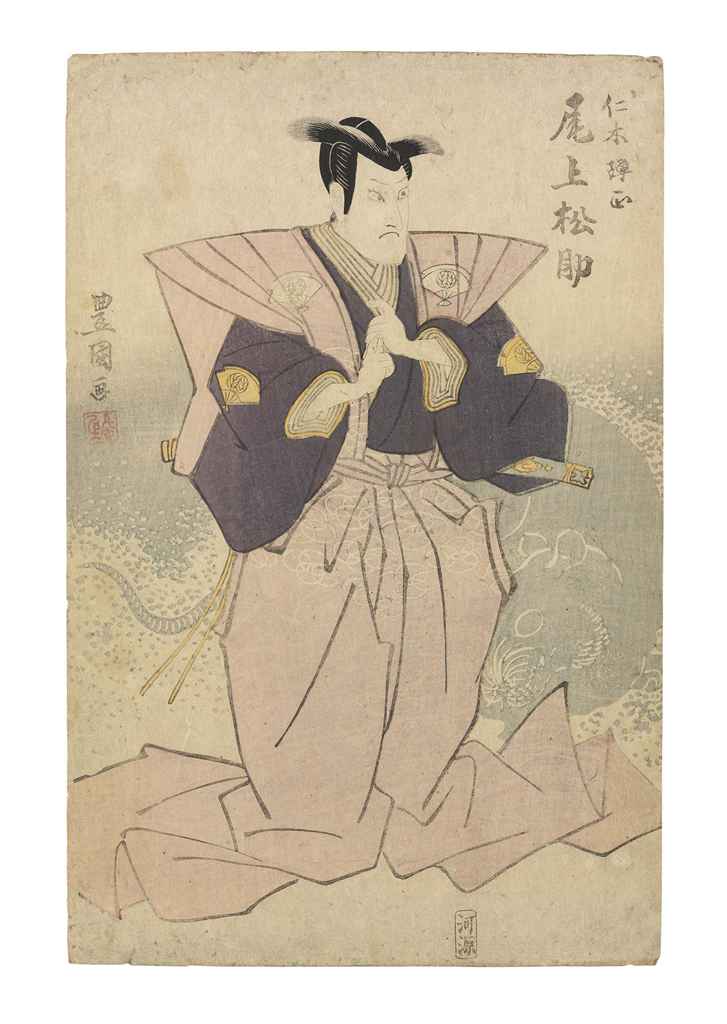
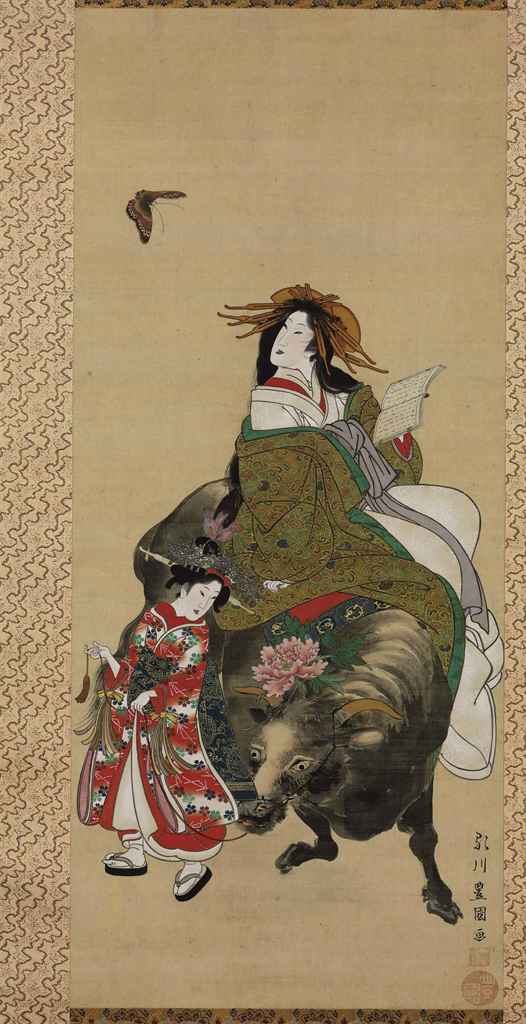
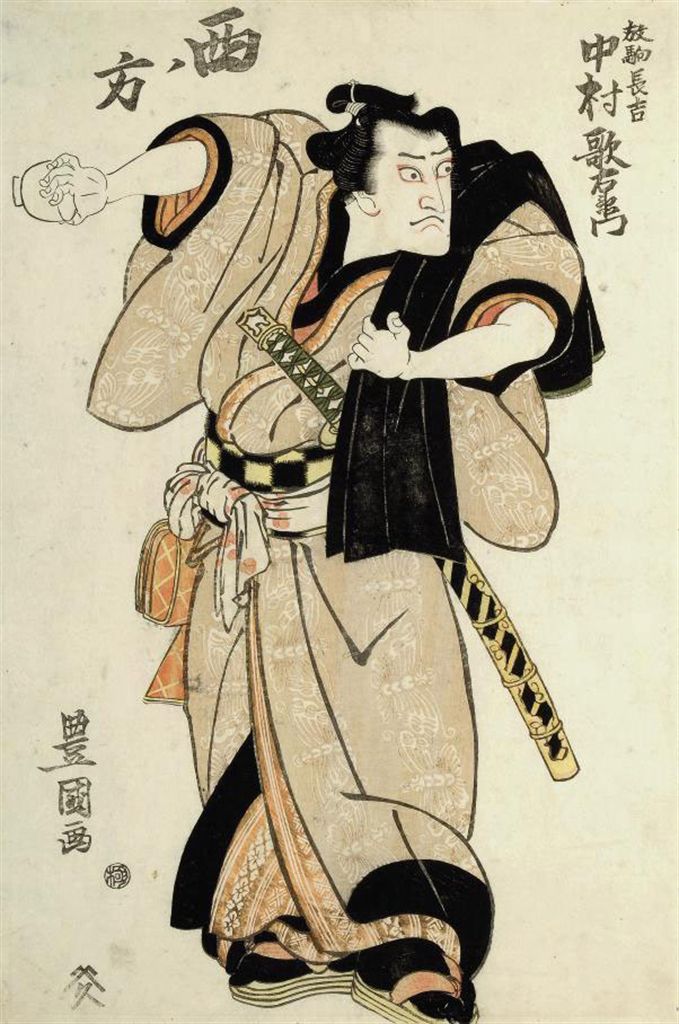
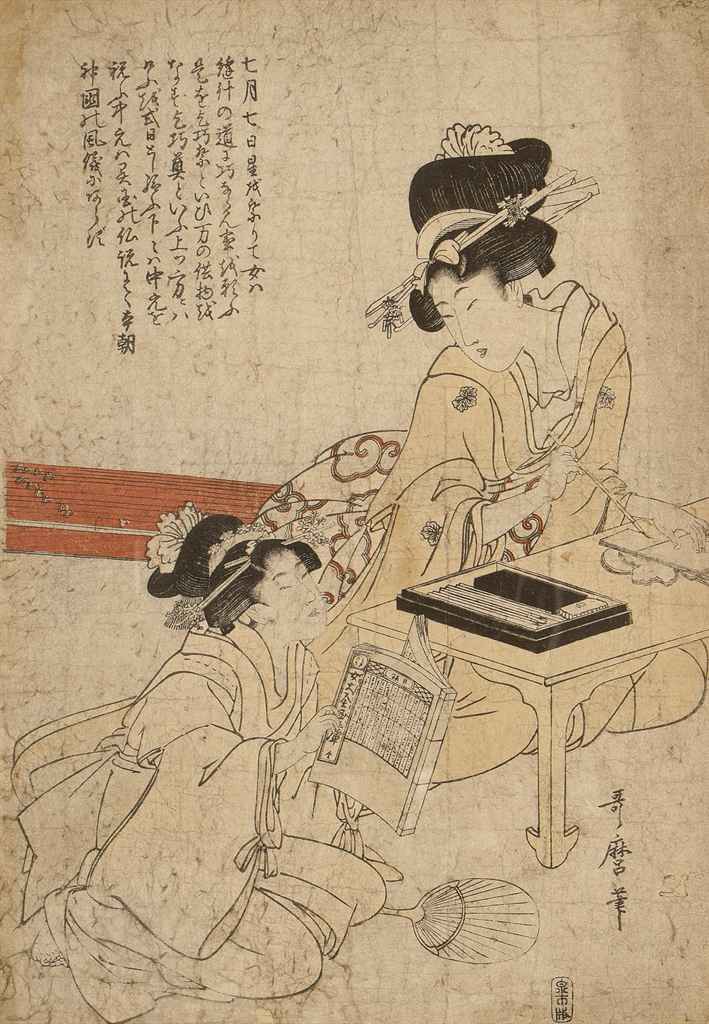

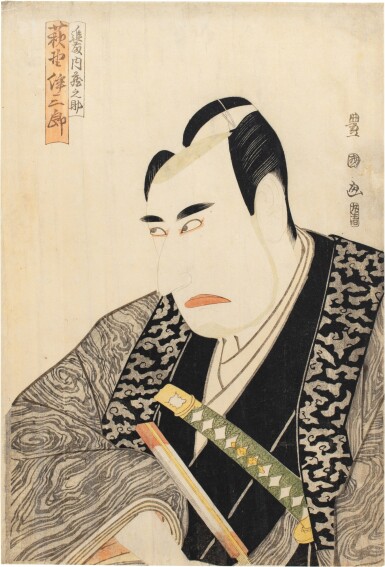
.jpg)
.jpg)
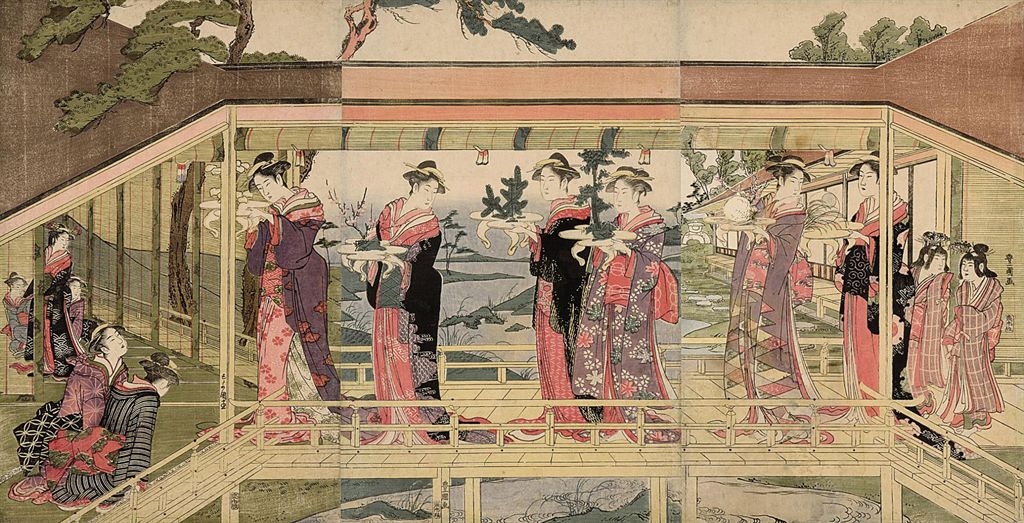
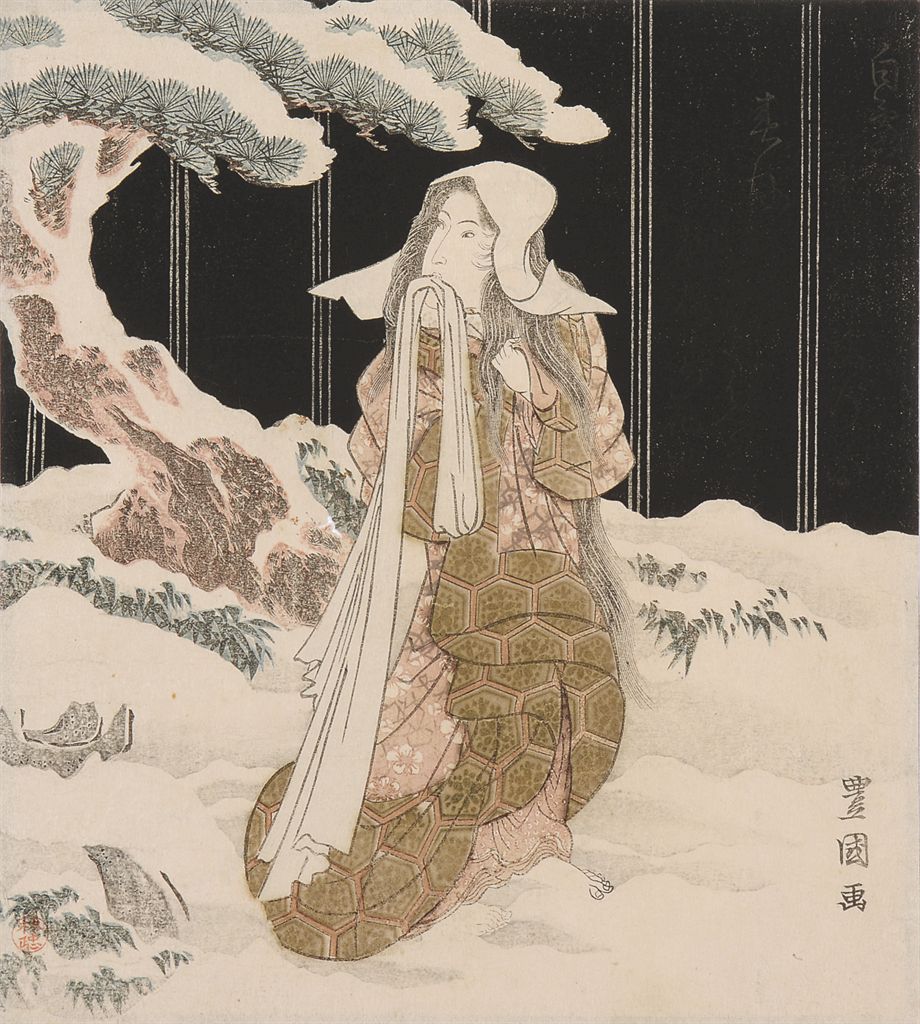
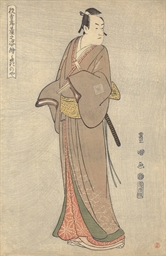
Testen Sie LotSearch und seine Premium-Features 7 Tage - ohne Kosten!
Lassen Sie sich automatisch über neue Objekte in kommenden Auktionen benachrichtigen.
Suchauftrag anlegen